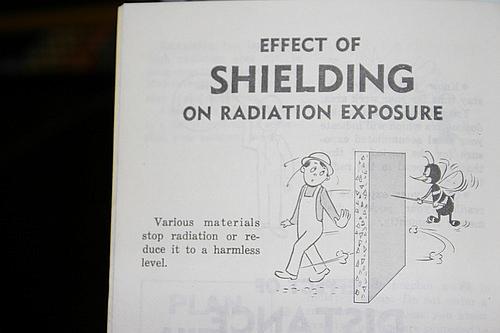Ecological Anxiety: Radiation Can Harm Drip by Drip Or With One Big Blast

Effects from radiation can be from cumulative exposure at higher than background levels over a long period of time but they also can be from massive exposure during a short period.
Fans of Deborah Blum on Wired’s Elemental blog may recall that she described the way assassins have been drawn to radioactive polonium because of its lack of taste and quick lethality. She wrote about the killing in 2006 of “Russian spy turned dissident, Alexander Litveninko.”
In the case of Litvinenko, investigators believed that he received his dose of polonium-210 in a cup of tea, dosed during a meeting with two Russian agents. (Just as an aside, alpha particles tend not to set off radiation detectors so it's relatively easy to smuggle from country to country.) Another assassin advantage is that illness comes on gradually, making it hard to pinpoint the event. Yet another advantage is that polonium poisoning is so rare that it's not part of a standard toxics screen. In Litvinenko's case, the poison wasn't identified until shortly after his death. … And finally, it gets the job done. "Once absorbed," notes the U.S. Regulatory Commission, "The alpha radiation can rapidly destroy major organs, DNA and the immune system."
I use the example only to show how varied radiation threats can be. The kind of radiation we’re talking about in Magnuson Park in Seattle is radium. Interestingly, both radium and polonium were discovered by health science pioneers Marie and Pierre Curie. They published a paper naming a new radioactive substance polonium in July 1898 and radium in December 1898, a very busy year.
The radium in Magnuson Park was used by the U.S. Navy in glow-in-the-dark paint for aviation controls during World War II. Were there still just a bunch of glowing dials and meters lying around, there wouldn’t be much of a threat. Anahad O’Connor in the New York Times wrote about the popularity of radium-infused glow-in-the-dark watches from the 1970s and concerns about radiation exposure:
One study by the Public Health Service many years ago found that a person who wears a radium watch for 24 hours a day over the course of a year could conceivably be exposed to 65 to 130 millirems of radiation. … That means a person who owns a radium watch (and presumably isn't wearing it 24 hours a day), has little to worry about, said Dr. M. Donald Blaufox, the chairman of the department of nuclear medicine at the Albert Einstein College of Medicine in the Bronx. A radium watch becomes hazardous only when someone opens one and tinkers with the dials, inhaling radioactive dust particles.
And that’s the problem with the Magnuson Park radiation. The paint went down drains and out into the wider world. It got into the soil, which means it also can be lifted into the air. It is no longer locked in place but is moving about, which is why the U.S. Navy and the Washington State Department of Ecology have initiated a cleanup.
The state has been assuring the public that there is no significant threat to human health at the park and that all potentially dangerous areas are sealed off. Parents whose children regularly play at the park, though, are concerned about cumulative exposure. As I explained in my last post, we all are hit with the equivalent of about 30 dental X-rays worth of radiation every year. When you start adding to that background exposure, you are upping your chances of developing cancer or other conditions.
This is especially true for children.
For adults, federal regulations limit occupational exposure to radiation at 5,000 millirems annually, meaning that every year, an adult would need to be exposed to 5,000 millirems above natural background radiation in order to be considered in any sort of health jeopardy. This is why people who work with radiation wear badges that can be read for cumulative radiation levels.
But for kids, the limit is one-tenth the adult limit: just 500 millirems above background levels. Free floating radium in a park could quickly expose a child who frequents the park to the maximum yearly limit.
Figuring out how much radiation state and federal agencies found in the park and how long it would take a child to reach that exposure level has been difficult. I’ll explain why in a later post.
Have your own ideas? Send them to me at askantidote [at] gmail [dot] com or via Twitter @wheisel
Image by candescent via Flickr
Here are more of Heisel's blogs on the subject:
Ecological Anxiety: Is There Radiation Where the Children Play?
Ecological Anxiety: Radiation Fears Stoked by History, Politics, and Propaganda
Ecological Anxiety: How Far Does Seattle Park's Radiation Contamination Reach?
